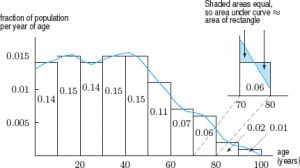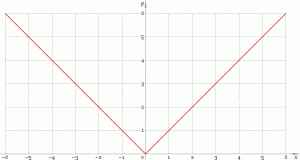Antiderivatives and the Fundamental Theorem of Calculus
Antiderivatives
Before we can understand what an anti-derivative is, we must know what a derivative is. So, let’s recap: a derivative is the amount by which a function is changing at one given point. In other words, the derivative is defined as the “instantaneous rate of change.” For example, if we were looking at the a problem about how fast a plane is traveling at $(t)$ hours, we would need to find the derivative at time $(t)$ hours in order to find that rate of change in that particular time. Therefore, the speed is the derivative of distance with respect to time—so if the plane is y miles from where it departed at time $(t)$ hours, then its speed is $\frac{dy}{dt}$ miles per hour.
Now that we know what a derivative is, we can talk about antiderivative. An antiderivative is just as obvious as the name sounds: it is a function that is the reverse of the derivative. (I like to think of it as what the equation is before it becomes differentiated). In calculus terms (and according to the textbook), of $F(x)$ is $f(x)$, that is, if $F′(x) = f(x)$, then we call $F(x)$ an antiderivative of $(x)$. For example, if $f’ (x)$ is $x^2$, then the antiderivative- that’s “F”- will be the integral of that function which is written as (write integral sign x^2 dx) which is equal to $\frac{1}{3x³}+ C$ And remember, while a function only has one derivative, it has infinitely many antiderivatives. But the antiderivatives all differ by a constant, and all of the antiderivatives of $x²$ take the form $\frac{1}{3x³}+ C$ for some constant C.
The Fundamental Theorem of Calculus
As we talked about in lecture, the Fundamental Theorem of Calculus shows the relationship between derivatives and integration and states that if f is the derivative of another function $F$ then, $\int_{a}^{b} f(x)dx$= $F(b)-F(a)$.
Therefore, since $F$ is the antiderivative of $f$ to find $\int_{a}^{b} f(x)dx$ we would find the antiderivative $F$ and then use that to evaluate $F(b)-F(a)$.
So, using the example provided earlier, let’s evaluate $x^2$ using the fundamental theorem of calculus.
- We know that the anti-derivative of $x^2$ is [ $\frac{1}{3x³}+ C$ ]
- So, $\int_{a}^{b} f(x^2)dx$ = [ $\frac{1}{3x³}+ C$ ]
- [ $\frac{1}{3(a)³}+ C$ ] – [ $\frac{1}{3(b)³}+ C$ ]
- And finally, $\int_{a}^{b} f(x^2)dx$ = [ $\frac{1}{3(a)³}+ C$ ] – [ $\frac{1}{3(b)³}+ C$ ]
Let’s Practice!
In the real world, antiderivatives and the Fundamental Theorem of Calculus are important for lots of things, and it is especially useful for determining how much things grow within an interval of time. We can apply this theorem to a business. Let’s take the popular movie and tv streaming service, Netflix, for example. Netflix started in 1997. If we wanted to determine how much money Netflix has made from 1997 to 2019, we could use the fundamental theorem of calculus to determine this. Netflix is growing at rate of $1997+15\cdot{x^.30}$
1. Our upper limit is 22 and our lower limit is 0 (because 2019-2019=22 years and 1997 is the initial year).
2. So, $\int_{0}^{22} f(1997+15\cdot{x^.30})dx$
3. And the antiderivative of $1997+15\cdot{x^.30}$ is [$\frac{150x^\frac{13}{10}}{13} +C$]
4. $\int_{0}^{22} f(1997+15\cdot{x^.30})dx$ = $\left[\frac{150x^\frac{13}{10}}{13}\right]_{0}^{22} $
5. [$\frac{150(22)^\frac{13}{10}}{13}$] – [$\frac{150(0)^\frac{13}{10}}{13}$]
6. So, our answer is that Netflix made a total $44575.64880801436 between the years of 1997 and 2019.
In conclusion…
Antiderivatives and the Fundamental Theorem of Calculus are useful for finding the total of things, and how much things grew between a certain amount of time.
DISCLAIMER-
The numbers used in the Netflix example are completely fictional and were made up for the purposes of the example (except for the fact that is was founded in 1997 which is completely factual).










